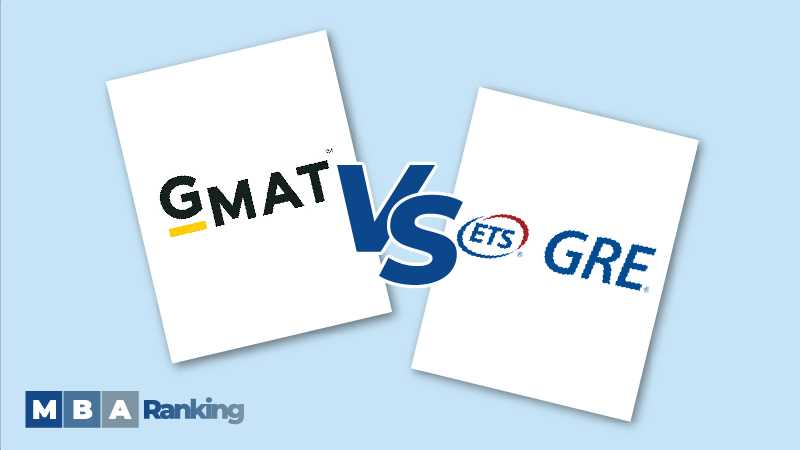How Law School Rankings Are Determined: A Comprehensive Breakdown
Input
Modified
Ranking Criteria – Law school rankings prioritize job placement, reputation, selectivity, faculty resources, and student debt, with a strong focus on BigLaw and clerkships. T14 Advantage – T14 schools rank higher due to elite job placements, strong reputation, and selective admissions, making their degrees highly valuable nationwide. Limitations – Rankings favor prestige and BigLaw jobs, often overlooking regional strengths, affordability, and alternative legal careers. Consider career goals and ROI.
Law school rankings play a crucial role in shaping the career trajectories of aspiring lawyers. The most widely recognized ranking system, U.S. News & World Report (USNWR), evaluates law schools annually based on multiple factors. These rankings significantly influence law school admissions, job placements, and employer perceptions.
This article explores how law school rankings are created, breaking down the key factors that determine a school’s position in the rankings.
Understanding the Law School Ranking Methodology
Law school rankings are determined by a weighted combination of several factors. The 2024 U.S. News & World Report methodology emphasizes job placement, academic reputation, student selectivity, faculty resources, and graduate debt. Below is a breakdown of each category and its impact on a school's ranking.

The Key Components of Law School Rankings
1. Job Placement Success (58%)
The most significant ranking factor is how well a law school places graduates into legal jobs. This category accounts for nearly 60% of the total ranking score and is based on three key metrics:
- Employment Rate at Graduation (33%)
- Measures the percentage of graduates employed at graduation and 10 months after graduation.
- Includes full-time, long-term jobs that require bar passage or J.D.-preferred positions.
- Schools with strong BigLaw and judicial clerkship placements rank higher.
- Bar Passage Rate (18%)
- Evaluates the percentage of graduates who pass the bar exam on their first attempt.
- Compares a school's bar passage rate to the statewide average.
- JD-Advantage Jobs (7%)
- Recognizes graduates working in roles where a law degree is beneficial but not required (e.g., compliance, consulting).
Schools with high employment rates, especially in BigLaw or federal clerkships, gain a ranking advantage.
2. Quality Assessment (24%)
This category reflects the reputation of a law school among academics, lawyers, and judges. It is divided into two components:
- Peer Reputation Score (12%)
- Based on surveys from law school deans, faculty, and admissions officers.
- Respondents rate schools on a 1 to 5 scale based on academic excellence.
- Lawyer and Judge Reputation Score (12%)
- Based on surveys sent to law firm hiring partners, judges, and legal professionals.
- Measures real-world recognition of a school's graduates.
Top schools like Yale, Harvard, and Stanford consistently rank high in reputation scores, ensuring their T14 status remains stable.
3. Selectivity (14%)
Law schools with highly competitive admissions tend to rank higher. This metric evaluates the incoming student body based on:
- Median LSAT/GRE Scores (5%)
- Reflects the academic caliber of admitted students.
- Higher scores indicate a more selective admissions process.
- Median Undergraduate GPA (5%)
- Measures the academic strength of admitted students based on their undergraduate performance.
- Acceptance Rate (4%)
- The percentage of applicants admitted.
- A lower acceptance rate boosts a school's ranking by demonstrating exclusivity.
T14 schools tend to have higher LSAT/GPA medians and lower acceptance rates, making them more selective.
4. Faculty and Resources (4%)
This category assesses the quality of faculty and academic resources, which contribute to a school’s prestige and student experience.
- Student-Faculty Ratio (3%)
- Measures how many students are assigned per professor.
- A lower ratio suggests better access to faculty and resources.
- Library and Research Resources (1%)
- Evaluates investments in law libraries, technology, and academic programs.
While important, this category has a relatively low impact on overall rankings.
5. Graduate Debt and Financial Outcomes (4%)
The final category considers the financial burden of attending law school. It accounts for:
- Average Graduate Debt (2%)
- Schools with lower student debt rankings perform better.
- Percentage of Graduates with Debt (2%)
- Measures how many graduates leave school with student loans.
Expensive private law schools may rank lower here unless they offer substantial scholarships or loan repayment programs.
Why T14 Schools Consistently Rank Higher
T14 schools (Top 14 law schools) consistently maintain their positions because they excel in employment outcomes, reputation, and selectivity.
Key reasons why T14 schools dominate the rankings:
✔ Superior Job Placement – Strong ties to BigLaw firms, federal clerkships, and academia.
✔ High Reputation Scores – Yale, Harvard, and Stanford are seen as elite institutions.
✔ Competitive Admissions – Low acceptance rates and high LSAT/GPA medians.
✔ National Recognition – T14 degrees are highly portable, meaning graduates can work anywhere in the U.S.
While some regional law schools may outperform T14 schools in specific states, no non-T14 school has consistently broken into the top 14 over the years.
Criticism of Law School Rankings
Despite their influence, law school rankings have limitations:
- Overemphasis on BigLaw and Clerkships
- The ranking methodology prioritizes BigLaw placements, ignoring public interest or small-firm careers.
- Reputation Bias
- Peer reputation scores favor historically prestigious schools, making it difficult for newer schools to rise.
- Geographic Disadvantages
- Regional schools with strong local job markets (e.g., UCLA, Texas, Washington & Lee) may rank lower despite excellent employment outcomes in their states.
- Cost and ROI Concerns
- High-ranking schools often have high tuition and student debt, but rankings don’t fully measure return on investment (ROI).
Some experts argue that prospective students should focus more on employment outcomes and debt rather than ranking prestige.
Conclusion – How to Use Law School Rankings Wisely
Law school rankings provide a useful benchmark for assessing school quality, but they should not be the sole factor in choosing where to apply.
Key Takeaways
✅ If your goal is BigLaw or a federal clerkship, rankings matter significantly—T14 schools offer the best opportunities.
✅ If you plan to practice locally, consider strong regional schools with excellent employment rates in your target market.
✅ Evaluate cost vs. ROI, as rankings don’t always reflect affordability.
Ultimately, the best law school for you depends on your career goals, financial situation, and desired job market—not just its ranking.
Similar Post
IT jobs are massively outsourced. Will it be the case for data scientists/research scientists?
Input
Modified
Indian economy is growing at a surprising speed with 9.7% in 2022 and 7.2% in 2023. Partly because of capital influx to the Indian economy from Silicon Valley's large tech firms for cheaper labor. In fact, it's not US firms alone that are outsourcing software engineers from India. Most western European companies have already relied on eastern European software engineers, and now they go to India. Japan and Korea follow the international trend. Meanwhile, souther and eastern European countries along with Russia provide world-class softwares that startles the global markets. Recently, Vietnam tries to get into this market. Although the language barrier is steep, which blocked Korean IT sector to be globalized, it is no longer a big surprise to see an IT company with Vietnamese IT backup.
Experts predict that within a few years, most low level IT jobs will be outsourced to above mentioned countries. And this is the very reason that I do not want to be deep in software engineering anymore. For most debugging, now ChatGPT is faster than me. For key functions and basic back-/front-end tasks, our Indian outsource team is way more cost-effective. I still have to do a lot by myself, but as David and Mc claimed that I do not need a pack of full-time software team for GIAI. Websites are managed by Keith with some dev support from India. For heavier tasks, we place an order with full spec sheet to the same Indian team. Initially, it cost me too much time for drawing the spec sheet and tell them the details again and again, (they really don't seem to read the details...) but as they get to see us a long-term contract, we feel that they pay more attention that noticeably help us to keep everything tight without much intervention.
Our internal discussion topic these days is whether data science jobs will also be outsourced to India or any other countries with lower wage in comparison to the U.S., western Europe, or developed parts of Asia. We all agree that, in the end, all expensive jobs will be replaced by cheaper wage, unless it is needed to be physically present. But let's think about the dynamics during this transitional period and how long will that be.

How many data scientists / research scientists do we have?
Many have claimed that data science tasks are 'democratized'. It is largely because of coding libraries from a variety of different sources that help us doing college level problem sets without too much background understanding in math/stat. But that's about the most they can get. As Keith often says, in his time (he's not that old, probably sometime in early 2010s) he had to code up each layer and node of neural network, but we hardly do that anymore, thanks to the libraries like PyTorch, Keras, TensorFlow....
We certainly have easier access, but that does not mean scientific tasks become easier and we become smarter. Most people running PyTorch algorithm are likely still at 'primitive' stage in terms of understanding what the libraries really do. At GIAI (or through SIAI), we often are emailed by a number of AI institutions from China and India, and respectively, some of them are suspicious. We don't go deep in talk, but it is not difficult for us to rule out them once we test them math/stat training levels.
In Europe, it is far less the case, but Keith tells us that such groups of software engineers who think they are experts in AI but with little to no understanding of math is widely visible in Asia. What we see here in UK/Eurozone (they are out!) is that many 'dreamers' go to math/stat undergrad and use the 3-year training to step up to respected AI/Data science programs like ICL's. The market is fairly well constructed when it comes to required training level, but as is for all STEM majors, students' survival rate is (not-so-)surprisingly very low.
Math alone is a tough major, and using math as a language of science in another discipline can be heavier challenge (although pure mathematicians will highly likely disagree with us).
In other words, we will unlikely be able to see huge influx of data scientists / research scientists in next 5 years. After all, this is why the UK government lowered its bar for immigration for most of AI-related tech researchers.
How hard will it be replaced?
No doubt that given the well-known challenges in STEM, supply of talent will always be limited. What's more concerning for us is what are the jobs/tasks that can/cannot be outsourced.
For example, BI(Business Intelligence) jobs does not require tremendous scientific knowledge. What's needed is some SQL commands, understanding of DB structures, and business intuitons, which is coined as 'market insight'. This is probably the lowest tier data science job in terms of required skillsets, but still needs tender and big brain. Most likely, this job should be given to the person of extreme domain knowledge. For an e-commerce firm, the BI should be well aware of consumer behavior in that country. As an example, given that Japanese/Korean/Chinese (especially later two) are highly a homogeneous society, they have shown strong tendancy to flock to identical products. In western hemisphere, such a trend event may mean something to analysts, but in Asia, it is likely the item's popularity will short-lived.
National level difference in consumer behavior still is a superficial example. There can be lots of local issues that remote analyst may fall into wrong conclusion due to limited information.
With above two examples in difficulties of STEM major and regional experties in BI jobs, we believe data science jobs, be it math heavy or not, will unlikely be replaced by cheaper outsourced labor in most developed countries.
How long the edge will stand?
Where there is no data, it is our rule that we do not make any prediction. The best I can do for this question is just to give you an educated guess.
For research scientists jobs, people from all sorts of STEM disciplines have filled vacancy. Here at GIAI, none of us are from the same college major. Our grad school topics are more distant. But we do share the common tongue, which is math/stat for science. With the continuous influx of talents from less financial rewarding disciplines (mostly in natural science), this indus


































